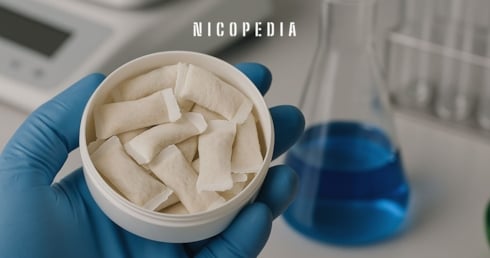Published 2025-04-09
Haypp Group Puts Extra High Strength Pouches to the Test
There's growing concern around ‘super-strong’ nicotine pouches now on the UK market. Some claim up to 43mg of nicotine per pouch—more than double the industry standard of 20mg. This has raised questions about the potential risks for users of such high-strength products.

Key Takeaways
- No to extremes – Haypp doesn’t stock pouches over 20mg.
- Claims don’t match reality – Lab tests show advertised strengths of some pouches are inaccurate.
- We test, we share – All results are published on NicoLeaks.
Putting Customers First
At Haypp, we believe in putting our customers' enjoyment and well-being first, so we made the decision not to stock any extreme strength pouches.
We support and follow the policy of the Swedish Institute for Standards, which recommends a maximum amount of nicotine per pouch of 20mg.
We believe higher levels of nicotine do not lead to higher levels of customer enjoyment, and for some people, it may lead to a poor experience.
It is a priority for us that we only stock high-quality products, so we ensure that all the snus and nicotine pouches we sell are independently tested.
The testing takes place at the Ecofins laboratory in Sweden, where tests are done on nicotine strength, pH levels, listed ingredients, and foreign substances.
We are transparent about our testing and so results are made publicly available on our Nicoleaks.com website.
Putting Pouches to the Test
We wanted to understand more about what exactly is in these ‘extreme strength’ pouches and if the levels of nicotine they claimed in their marketing matches what is in the products.
We selected three of the most commonly sold ultra strength products on the UK market and sent them for testing at the Ecofins laboratory.
The results were surprising.
None of the three products tested had nicotine levels that matched their advertising or packaging.
In fact, all three had nicotine levels that were significantly lower than those advertised by the company.
| Product | Advertised strength | Test results |
| Product A | 50mg/g 30mg per pouch |
44.4mg/g 27.5mg per pouch |
| Product B | 50mg/g 35mg per pouch |
44.5mg/g 27.6mg per pouch |
| Product C | 66mg/g 43mg per pouch |
50.8mg/g 32mg per pouch |
Product A had advertised 30mg per pouch but actually contained 27.5mg.
Product B advertised 35mg per pouch but contained 27.6mg.
Finally, product C advertised 43mg but contained 32mg per pouch.
The differences between what was advertised on the package and the levels actually in the pouch ranged from between 9% and 26%.
Typically, when we test pouches, we might expect to see some very small differences between what a manufacturer says is in the product and what appears in the test results.
However, variations of these levels are very rare and worrying. The levels are lower in this test batch, but could they be higher in the next batch? Could there be other ingredients in the products that have levels different from those advertised?
Pushing Extremes
The reality is that these companies are most likely deliberately pushing extreme strength nicotine as a marketing strategy.
They are using high-nicotine strengths as a promotional tool, even when the actual nicotine levels are lower.
It seems their goal is to persuade people that higher strengths are better.
This is not the case, and we do not believe that this is responsible retailing.
This will not be good for pouch users and does not send a positive message about enjoying nicotine responsibly.
Responsible Choices
We will always support our customers and their choices, and we believe in transparency.
People have enjoyed snus and nicotine pouches for years without needing extreme levels of nicotine.
We hope other UK nicotine pouch retailers will follow our lead and support the industry standard of a maximum level of nicotine of 20mg per pouch.
We believe it’s the right thing for customers to allow them to enjoy nicotine.
You can see the results of all our testing, including the extreme strength products, on NicoLeaks.
Related articles




